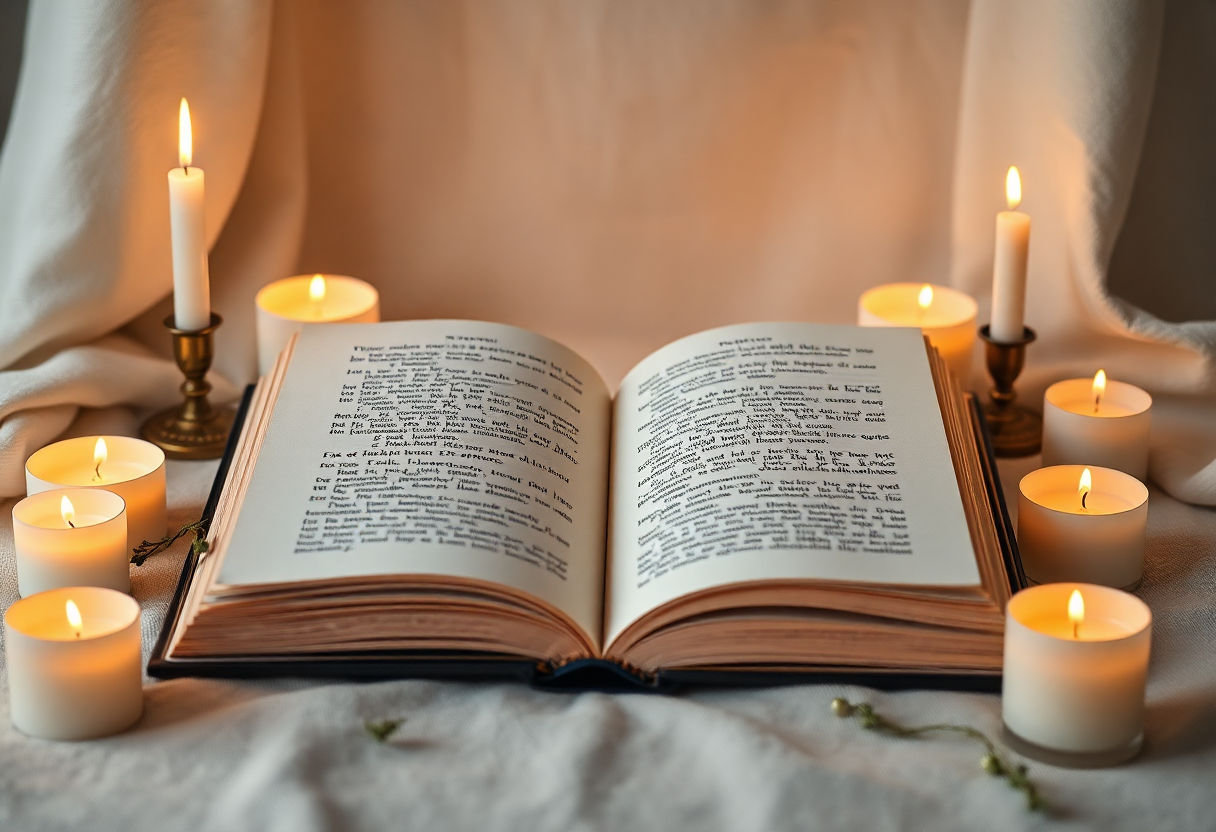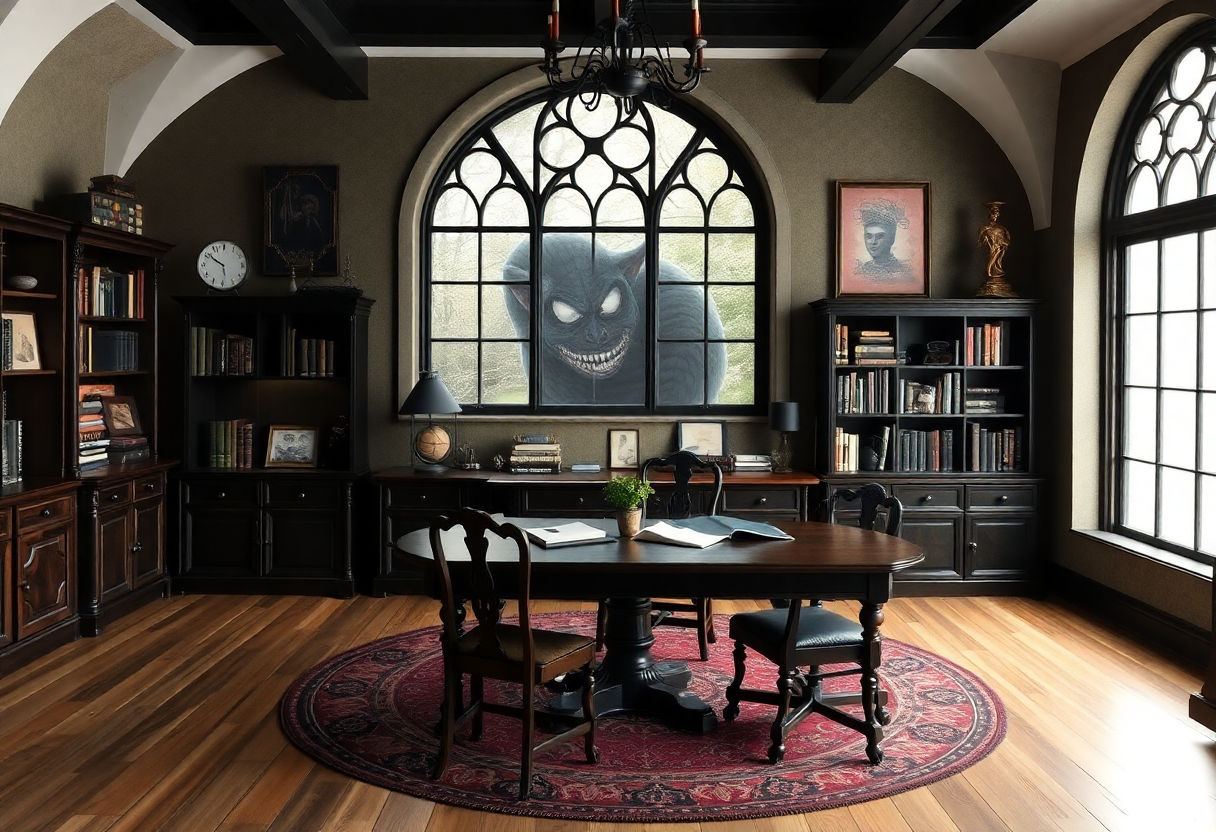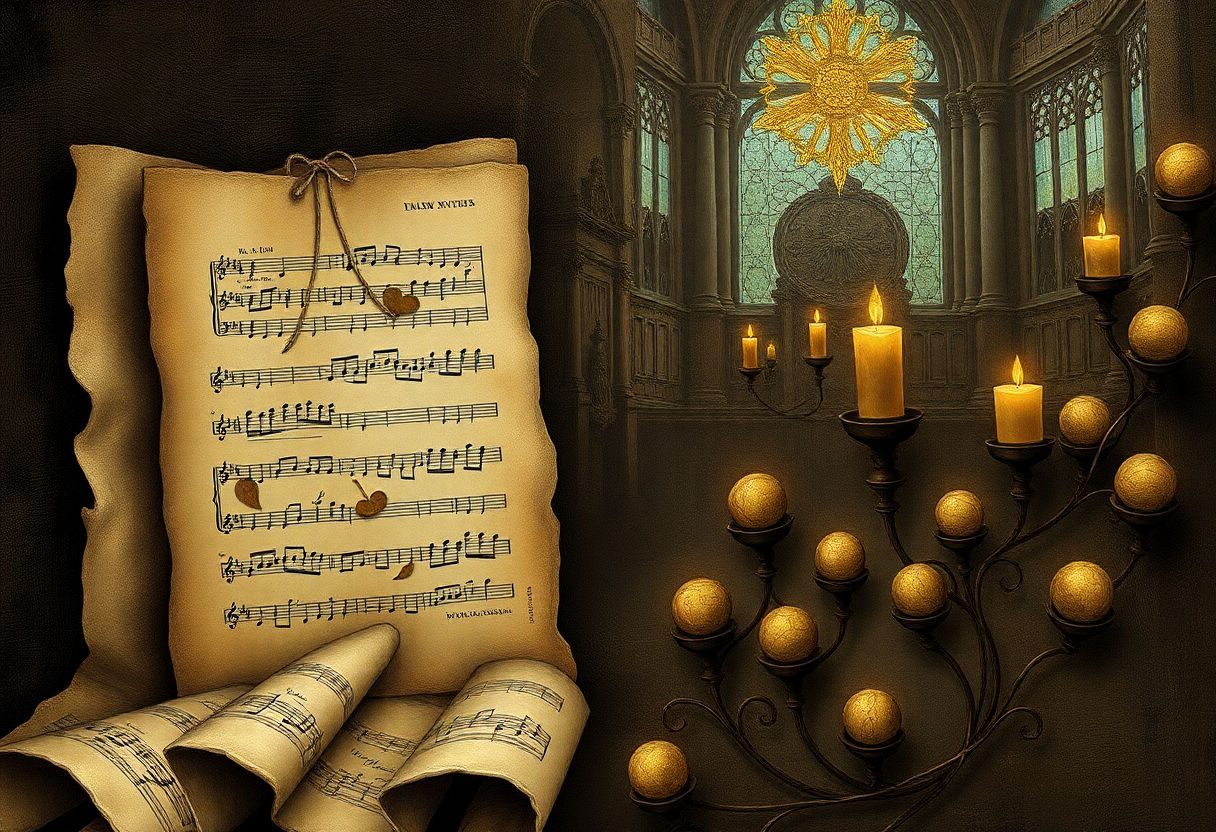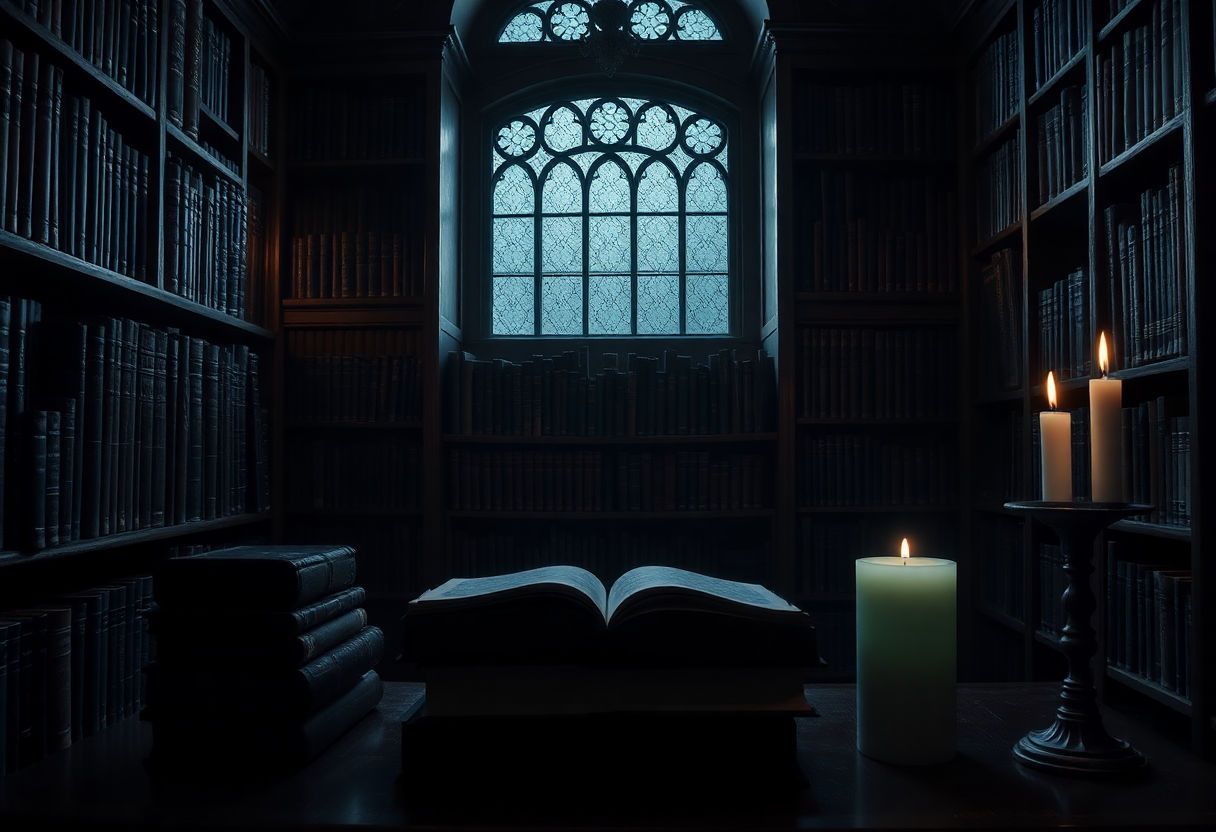Gothic Academia blends brains and mystery. Imagine sneaking into an old library full of dusty books and flickering candles. This guide lights the path to this unique vibe, mixing gothic style with academic flair. We will dive into how literature, fashion, and art bring this aesthetic to life. Learn how to transform your wardrobe and decorate your space with gothic elements. Ready to explore this fascinating world? Let’s start a journey through the stories and styles that define Gothic Academia.
Key Takeaways
- Gothic Academia mixes gothic charm with a love for learning.
- Victorian literature and architecture shape its roots.
- The style favors dark colors, layered clothing, and antique decor.
- Classic books add depth and inspire this aesthetic.
- Gothic elements in art and music enhance the vibe.
The Origins of Gothic Academia
Gothic Academia has roots in history. It blends the gothic style with the rich world of learning. Think of old libraries filled with worn leather books. Picture dark wood, high ceilings, and dim lighting. The vibe brings out a feeling of mystery and intellect.
Victorian literature plays a big part here. Many gothic novels came from this time. Mary Shelley’s Frankenstein and Bram Stoker’s Dracula are examples. These stories mix the strange with deep questions about life. They set a stage for the gothic feel.
Gothic architecture also leaves its mark. Menacing cathedrals with towering spires. Stone gargoyles looking down. The use of light and shadow. They create an eerie yet fascinating environment. This style makes a perfect backdrop for an academic setting.
The 18th and 19th centuries showed a strong connection between the gothic and learning. Educated people then cherished literary discussions. They gathered in libraries or salons, surrounded by gothic decor.
In modern times, people still enjoy this mix. The aesthetic inspires many who love both the mysterious and the intellectual. Gothic Academia pulls from these old influences to create a unique atmosphere. It’s a style that speaks to those who appreciate history, literature, and the darker side of design.
Key Elements of Gothic Academia Style
The Gothic Academia style blends the elegance of the academic world with the moody allure of gothic themes. One of the main elements involves dark color palettes. Think deep greens, rich browns, and classic black. These hues set a somber and thoughtful mood.
Fashion also plays a big role. Imagine long coats, lace blouses, and tough boots. These can pair with plaid skirts or tailored trousers. Accessories such as chunky rings or a pocket watch add a unique touch.
Decor in a Gothic Academia setting echoes the mysterious vibe. Heavy drapes, antique furniture, and candlesticks create an inviting yet mysterious atmosphere. Ancient-looking books stacked on shelves add to the intellectual feel.
Quotes from famous thinkers often inspire those interested in this style. Edgar Allan Poe said, “All that we see or seem is but a dream within a dream.” This could perfectly capture the enchanting, dreamy side of Gothic Academia.
Textures are key in this aesthetic too. Smooth leather, soft velvet, and rough wood add layers to the decor and fashion. Each element complements the others, creating a cohesive look. Think of it as a well-composed symphony of style.
The blend of academia and gothic creates a unique charm. It invites curiosity while offering a sense of mystery and depth. With these elements, one can truly embrace the shadows and bask in the beautiful darkness of Gothic Academia.
Fashion: Merging Gothic and Academia

The world of fashion offers endless possibilities. When Gothic meets Academia, you create a unique style. This blend honors dark elegance and scholarly charm.
Gothic Fashion: Think of lace, velvet, and dark hues. Black, deep reds, and purples make a strong base. Long, flowing dresses add drama. High-collared shirts and Victorian-style boots complement the look.
Academic Vibe: Add some tweed, plaid, or argyle. These patterns bring in an intellectual feel. Blazers or cardigans layer nicely over shirts. Choose round glasses to nod to classic thinkers.
To merge these styles, use key pieces:
- Layers: Mix a black lace top with a tweed blazer.
- Patterns: Pair plaid skirts with a corset or ruffled blouse.
- Accessories: Gothic jewelry with silver or black stones adds mystery.
In daily outfits, subtle touches work wonders:
- Swap a regular coat for a long, black trench.
- Choose Oxford shoes in darker shades.
- Add a thin, silver necklace with a raven pendant for a hint of darkness.
The beauty of mixing Gothic and Academia lies in balance. It’s about bold choices with a scholarly touch. This style tells a story through clothes. It’s where the past meets the present, where shadows enhance learning.
The Role of Literature in Gothic Academia

Gothic literature plays a big part in Gothic Academia. Think of classic works like Mary Shelley’s Frankenstein or Bram Stoker’s Dracula. These stories set the stage with dark themes and mysterious settings. They create a world full of shadows and secrets.
In Gothic Academia, each piece of literature builds a bridge between the past and the now. Many of these stories feature grand old buildings, deep forests, or stormy nights. They give readers a sense of adventure and discovery. The characters often face challenges that test their beliefs and morals.
Some books also explore the struggle between science and the unknown. Victor Frankenstein, for example, tries to push the boundaries of life itself. Through his actions, readers see the dangers of unchecked ambition.
Gothic literature invites readers to think deeply about life and society. Edgar Allan Poe’s short stories invite us to explore the human mind. His tales blend fear with beauty, making readers question reality.
This literary style also inspires many in fashion and design. Long coats, dark colors, and old-world charm mirror the stories’ themes. The atmosphere created by these books seeps into everything—from clothes to room decor. It’s about bringing a piece of that mysterious and thoughtful world into everyday life.
In essence, literature fuels Gothic Academia. It shapes how people think, dress, and create. It blends learning with a touch of the eerie and the unknown.
Creating a Gothic Academia Environment

To create a Gothic Academia environment, start with your space. Think of a library from a classic novel. Dark wood shelves filled with books. Heavy curtains that block out bright light. Choose a color palette of black, deep green, or rich burgundy. These shades set the mood.
Lighting plays a key role. Choose dim lights. A desk lamp with a green shade can add a soft glow. Candles bring warmth and mystery. Use tall candelabras or simple holders. Even battery-operated candles work well for safety.
Add antique pieces to the room. Look for old clocks, typewriters, or brass objects. These add age and character. Display them on shelves or desks. An old globe can add a touch of adventure.
Art also helps shape the atmosphere. Hang portraits with heavy, dark frames. Landscape paintings with stormy skies fit well. Black and white photos can bring a sense of history.
Include textures. Velvet pillows or a wool throw can add layers. Soft rugs underfoot invite comfort. Plants can add life. Choose ones with large leaves like ferns. They fit in without breaking the mood.
Finally, consider music. Soft classical pieces or instrumental tunes blend well. You can also play recordings of old radios or distant thunder. These sounds complete the ambiance.
Each detail brings you closer to a space where Gothic Academia feels alive.
Gothic Influences in Art and Music

Art and music bring the dark beauty of gothic themes to life. Artists create powerful images with detailed and sometimes spooky elements. Think of paintings with dark castles, shadowy trees, or silent figures. These works inspire feelings of wonder and mystery, drawing you in with their eerie charm.
Music plays a big role too. Gothic music often features deep voices and haunting melodies. Bands like The Cure or Bauhaus have songs with these elements. They can be slow and filled with emotion or upbeat with a dark twist. For example, a song might start with a slow, deep piano and grow into an intense, emotional chorus. This creates a captivating mood.
Gothic influences show not only in the tones and colors but also in the themes. Artists focus on ideas like love, loss, and the passage of time. These themes are both timeless and relatable, making gothic art and music feel fresh and meaningful.
Whether it’s the brushstrokes on a painting or the notes of a song, gothic styles add depth to the academia vibe. They create a connection to something bigger, something more mystical. So next time you see a shadowy painting or hear a deep, slow song, remember the influence of gothic art and music. They are key players in the gothic academia world.
Conclusion
Gothic Academia offers a captivating blend of dark beauty and intellectual curiosity. This style mixes elements from Victorian culture and gothic aesthetics, creating a rich experience. As you explore this aesthetic, combine literature, fashion, and art, allowing them to inspire your space. Embrace this style at your own pace, adding pieces that express your personality. Gothic Academia not only enriches your environment but also deepens your engagement with art and learning. Stay open to new ideas and let your personal style evolve within this fascinating world. This journey provides more than just style; it offers endless possibilities.
Frequently Asked Questions
What is Gothic Academia?
Gothic Academia is a style that mixes dark, gothic themes with academic elements. It takes inspiration from Victorian literature and gothic architecture. It emphasizes a mysterious yet intellectual vibe.
How can I create a Gothic Academia outfit?
Start with basic academic clothes like blazers and button-up shirts. Add some gothic details like lace or dark jewelry. Stick to dark colors like black or deep purple for the best effect.
What kind of literature inspires Gothic Academia?
Works by authors like Edgar Allan Poe and Mary Shelley offer great inspiration. Gothic and Victorian novels with dark themes fit well with this style.
How can I decorate my space in Gothic Academia style?
Use dark colors for walls and furniture. Add vintage bookcases and candle holders. Look for decor pieces with gothic designs to enhance the mood.
Is Gothic Academia only about fashion and decor?
No, music and art play big roles too. Listen to classical music with a dark tone or enjoy gothic art pieces. Every element adds to the complete vibe.



